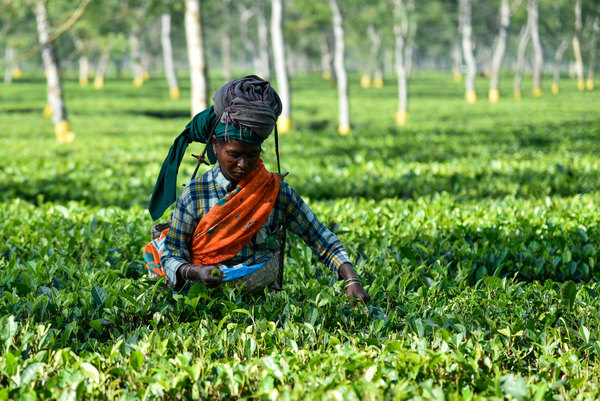New hope for vultures?
The vulture population in South Asia has declined catastrophically in the last 2 decades, with population decreases since 1992 reported to be over 97% (Senacha et al., 2008). With populations of three of the Asian vulture species decreasing from the 'tens of millions' to less than 60,000 for all species combined, the decline has been…
Celebrating insects
This week is National Insect Week in the UK. With over 900,000 different species, insects comprise over 70% of all known species and inhabit all habitats apart from deep ocean, so it’s hardly surprising they get a whole National Week rather than a mere day! Those of you who find insects a daily irritant may…
Pesticidal plants help poorer farmers reduce crop losses
Earlier today I was leafing through the latest issue of Kew Scientist, and was interested to read about Kew's work with pesticidal plants in Africa. Providing poorer farmers with environmental benign alternatives to expensive, synthetic pesticides, native species with pesticidal properties are the subject of two newly funded projects which continue Kew's collaboration with the Natural…
Biodiversity, Development and Poverty Alleviation
As Vera pointed out in her blog yesterday, this Saturday (22 May) is the International Day for Biodiversity. The theme for this year is ‘Biodiversity, Development and Poverty Alleviation: Recognizing the Role of Biodiversity for Human Well-Being’. Poverty alleviation is something we feel strongly about here at CABI where our mission is to “improve people’s…
Roasted grasshopper with a sprinkling of termites
Chances are if you’re European you don’t make a habit of eating insects. When you have eaten them it was probably by mistake, maybe whilst enjoying a summer bike ride or a run. After a few seconds of coughing and spluttering and feeling personally affronted at the insect flying into your mouth without warning you…
Integrated systems – the sharp end of information management
Locusts, livestock diseases, invasive species, and the legacy of Linnaeus all featured in Thursday morning’s session on integrated information systems at IAALD 2010. All the presentations described how information systems were being tailored to address specific problems and issues in agriculture production for the researcher or for the practitioner at the sharp end of the…
Digital native or information alien?
Special report from IAALD 2010: Are young people really the digital jugglers we’ve been led to believe? We’ve grown accustomed to seeing many young people as multi-tasking wiz kids who operate freely in technology rich space on the internet, free to interact with who they choose, and able to conjure relevant information at the drop of…
Can librarians, scientists and IT geeks feed the world?
Special report from IAALD 2010: At the International Association of Agricultural Information Specialists (IAALD) meeting in Montpellier this week, representatives from these groups have got together to discuss just this issue. Mark Holderness, Executive Secretary of GFAR thinks these ‘knowledge managers’ have a key role to play in ensuring that agricultural information is accessible…
Challenges of sharing knowledge – including volcanoes
The struggle to make agricultural information more widely available faces many challenges, but they do not normally include volcanic eruptions. For the last few days, the IAALD conference on Scientific and Technical Information and Rural Development’s website has been providing updates on the effects of activity from the Eyjafjallajökull volcano in Iceland. So it was a big…
The effects of the Icelandic volcano that didn’t make the news!
Image from National Geographic. Iceland's Eyjafjallajökull volcano eruption on 12th April made the news yesterday (3 days later) mainly because of its effect on air traffic movement around the UK, Scandinavian countries and other European countries, with airports in many countries still being shut today. The particles of rock and silica in the volcanic ash…


